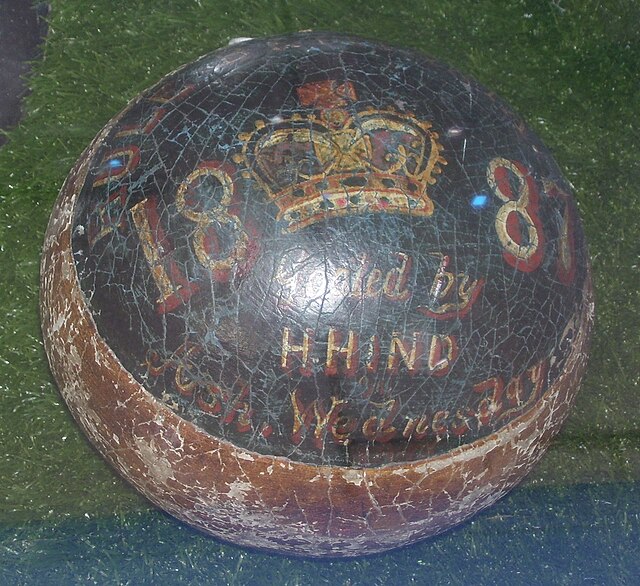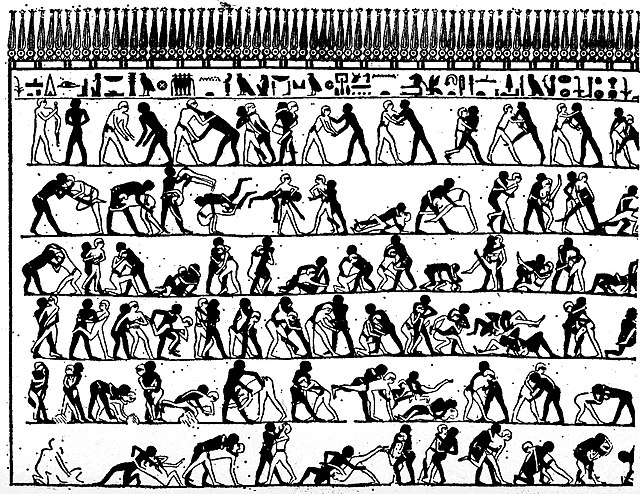The history of sports extends back to the Ancient world in 7000 BCE. The physical activity that developed into sports had early links with warfare and entertainment.
Ancient sumo-wrestling competition from the Japanese Heian or Kamakura period (between 794 and 1333)
Paintings of humans in the cave of swimmers
An Egyptian burial chamber mural, from the tomb of Khnumhotep and Niankhkhnum dating to around 2400 BCE, showing wrestlers in action
The Charioteer of Delphi, Delphi Museum
Royal Shrovetide Football
The Royal Shrovetide Football Match is a "medieval football" game played annually on Shrove Tuesday and Ash Wednesday in the town of Ashbourne in Derbyshire, England. Shrovetide ball games have been played in England since at least the 12th century from the reign of Henry II (1154–89). The Ashbourne game also known as "hugball" has been played from at least c.1667 although the exact origins of the game are unknown due to a fire at the Royal Shrovetide Committee office in the 1890s which destroyed the earliest records. One of the most popular origin theories suggests the macabre notion that the 'ball' was originally a severed head tossed into the waiting crowd following an execution. Although this may have happened, it is more likely that games such as the Winchelsea Streete Game, reputedly played during the Hundred Years' War with France, were adaptations of an original ball game intended to show contempt for the enemy.

Shrovetide ball goaled by H. Hind on Ash Wednesday 1887 that pre-dates the fire which destroyed the earliest written records of the sport.
Shrovetide balls typical of those on display in shops and public houses in Ashbourne. These three were on display at the Wheel Inn, Ash Wednesday, 2013. The central ball shows the three cocks that appear on the Cockayne coat of Arms. This image is common to many game balls. To the right is an example of a ball without decoration.
Leather bottle used in village football from the 1800s on display at the National Football Museum, Manchester.
Ball being 'turned up' from the 'plinth' at Shawcroft car park located along the line of a culverted section of Henmore Brook on Ash Wednesday 2011








